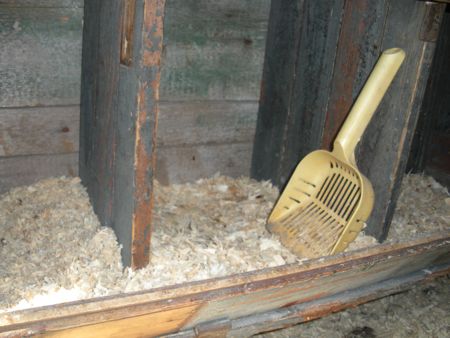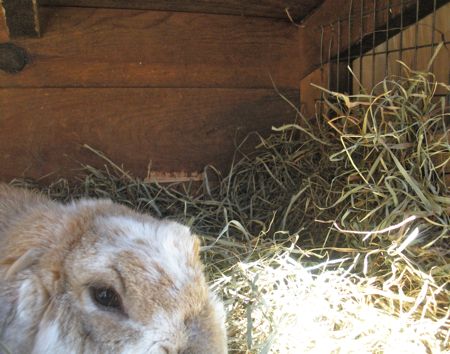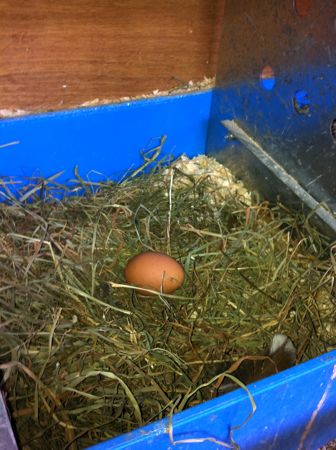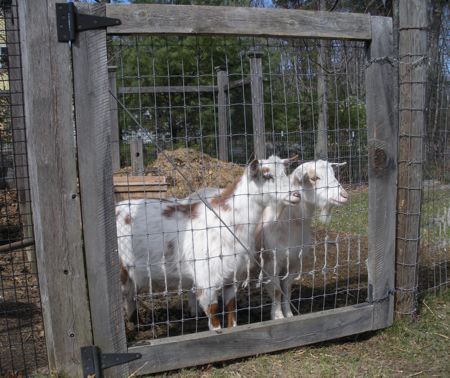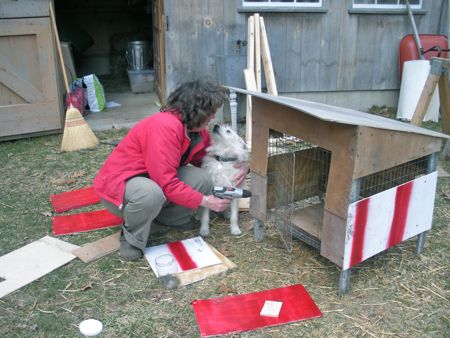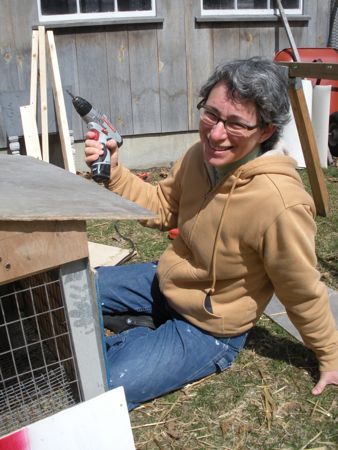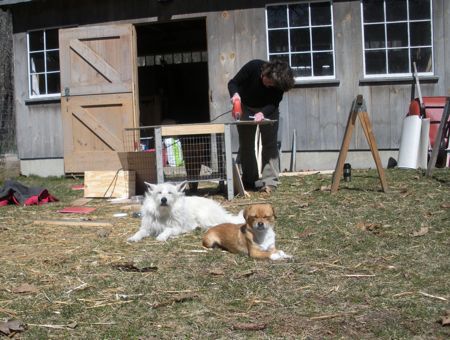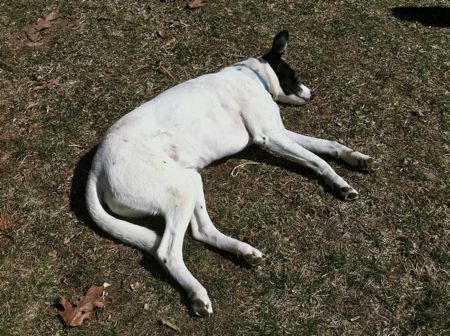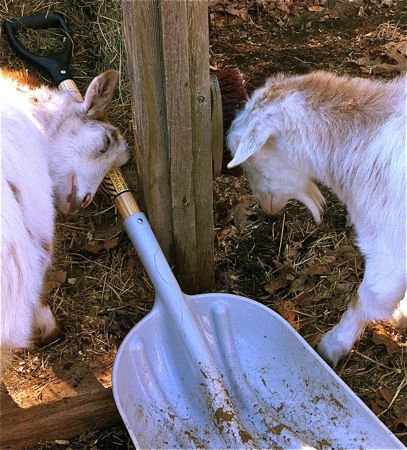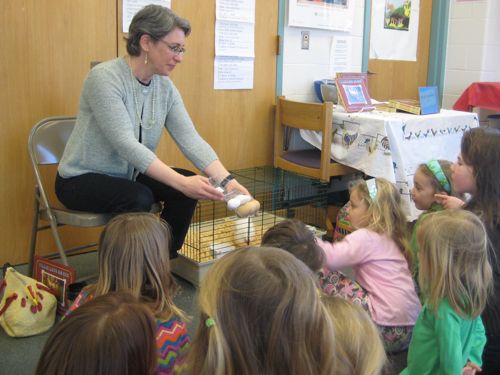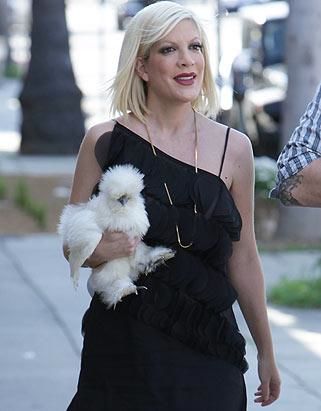I’ve always bedded the nesting boxes with pine shavings. The girls seemed to like it, and I found it easy to keep clean with a daily quick pick-up with a kitty litter scoop.
This photo is of the nesting boxes in the big barn. It’s twelve inches off of the ground and built from old barn wood. The HenCam coop has metal boxes, which I prefer because they are easy to clean – the bottoms pop out for scrubbing, and although I’ve never had a mite problem, if I did, I’d be able to disinfect them. But, when I moved the hens into the HenCam coop they did not lay in the boxes. First they laid on the ground, and then they discovered Candy’s hutch. Agnes and Philomena brazenly walked right in and laid eggs in the far right corner where it’s shaded but not too dark, and the eggs are hidden.
When Candy was younger, she’d never have let the hens into her home. I’ve seen her in full-bunny attack mode, with teeth bared, staring down a hen who dared to walk up her ramp. But, Candy has mellowed in her old age. Or, maybe she likes these hens.
In any case, I don’t want chickens or eggs in Candy’s hutch. Candy keeps her home immaculately clean. The chickens poop. I don’t want to collect eggs from in there, where they could be broken by a hopping bunny. I don’t want to hunt every afternoon for the eggs. I want them in one place, in the coop, in the nesting boxes.
What to do? I tried taking up Candy’s ramp and not letting the hens in. You might have seen agitated brown hens leaping at Candy’s house. I tried putting those hens in the nesting boxes in the coop. They wouldn’t stay put. One laid on the ground. One stopped laying, which isn’t a good thing at all.
What was it about the hutch that they liked so much? It wasn’t Candy’s grumpy company. It was the soft and deep bedding. My hens had found the equivalent of Frette sheets. So, I filled the nesting boxes with hay,
and the hens filled them with eggs.
Sometimes you have to give the girls a little luxury.
